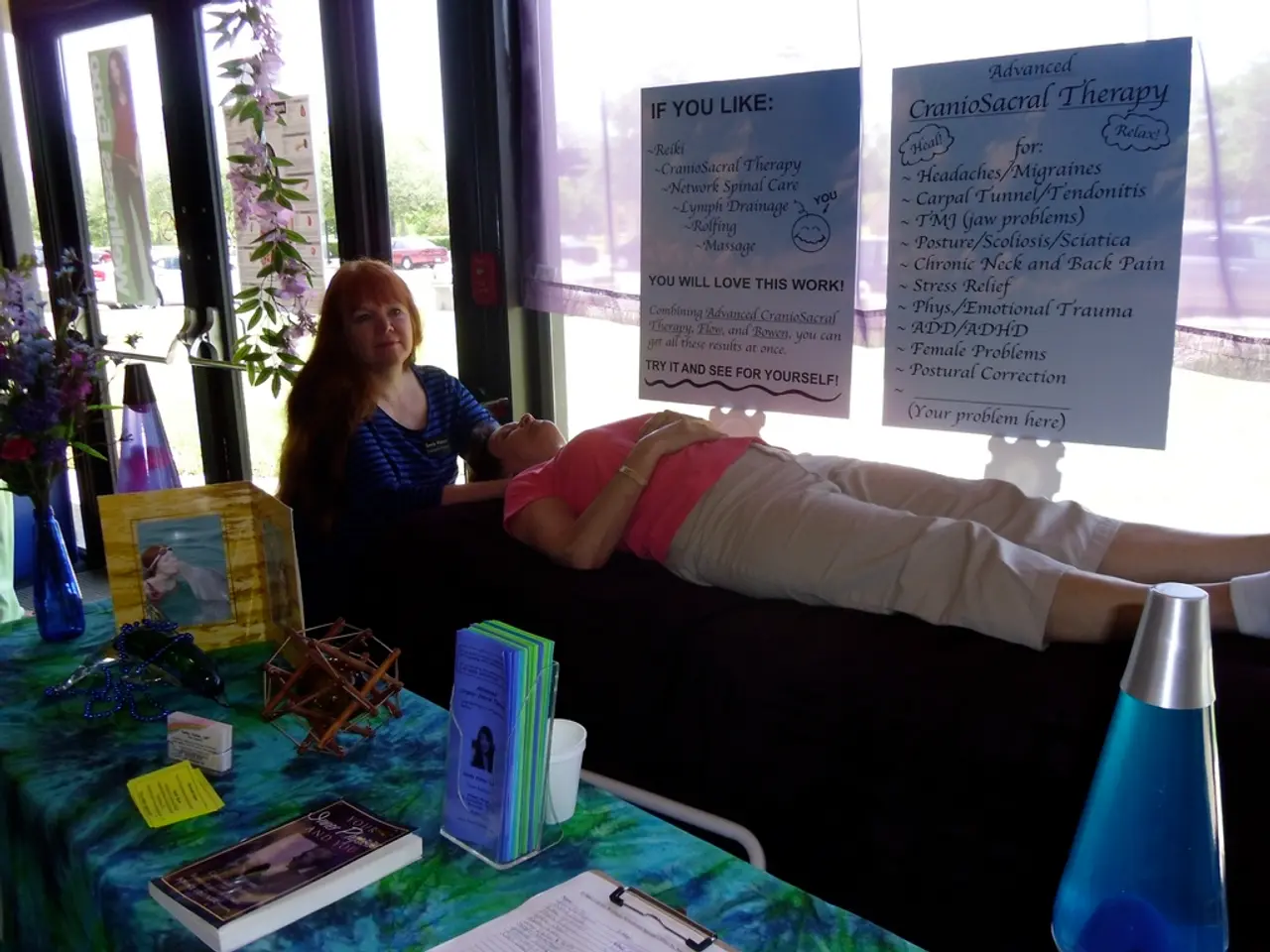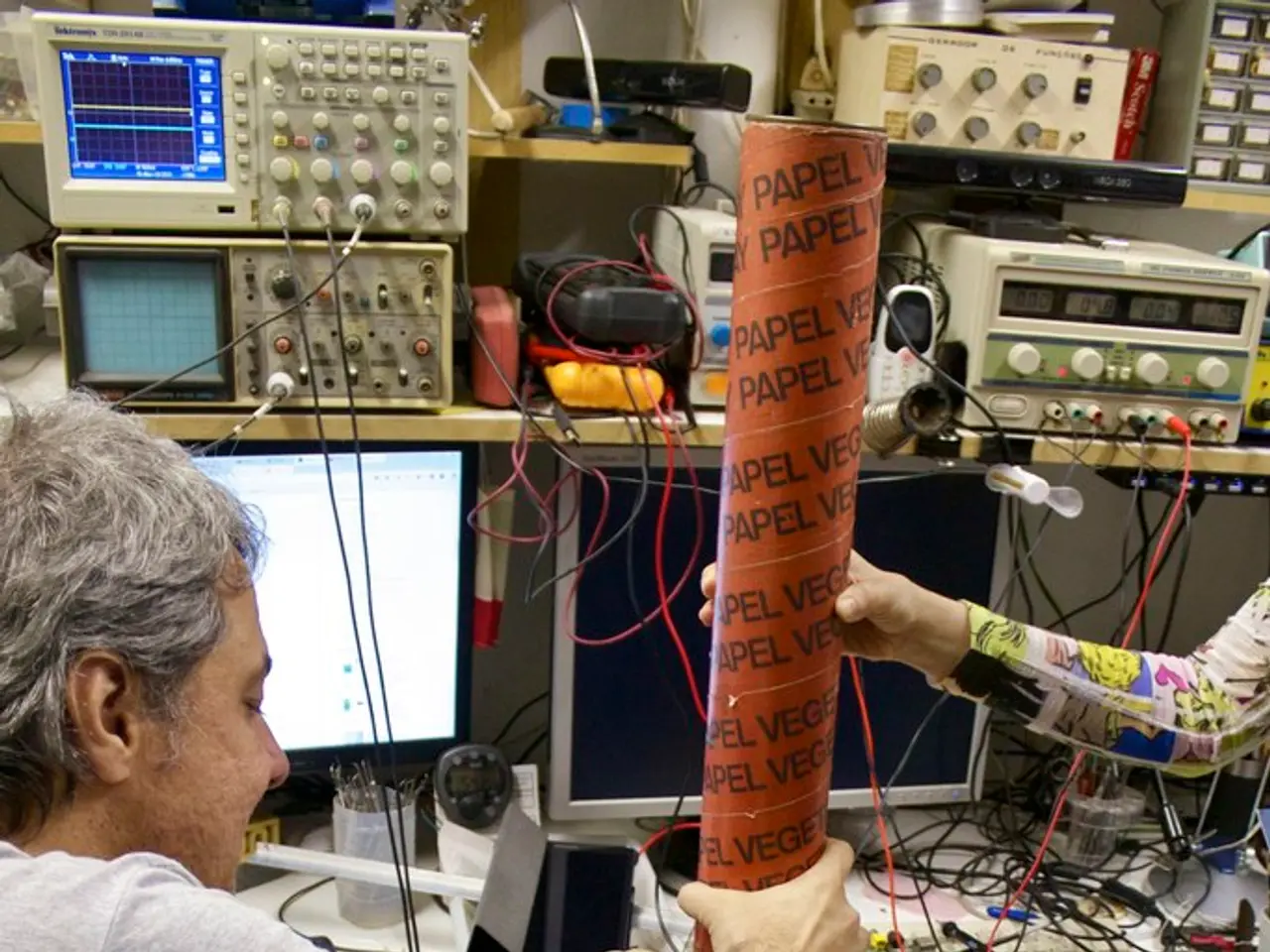Impact of Postmenopause on Weight, Hot Flashes, and Additional Health Aspects
Postmenopause, the third stage of menopause, marks the end of menstruation and lasts for at least 12 months. During this stage, a rapid decline in estrogen levels can lead to various symptoms, such as hot flashes, mood changes, and an increase in abdominal fat.
Menopausal Hormone Therapy (MHT)
MHT, also known as Hormone Replacement Therapy (HRT), is the most effective treatment for menopausal symptoms. Forms of MHT include Tibolone, a single tablet with estrogen, progesterone, and testosterone effects, and Estrogen combined with a Selective Estrogen Receptor Modulator (SERM), such as bazedoxifene. These treatments can improve symptoms, sexual function, and reduce the risk of osteoporosis. However, side effects may include vaginal bleeding, bloating, breast tenderness, headaches, mood changes, and nausea.
Nonhormonal Pharmacological Treatments
For those who prefer nonhormonal options, various medications are available. Antidepressants (SSRIs/SNRIs) can modestly reduce vasomotor symptoms (hot flashes) and help with mood and anxiety symptoms. Gabapentin is used in low doses to alleviate vasomotor symptoms and aid sleep disturbances. Oxybutynin is sometimes prescribed for vasomotor symptoms and bladder issues, but it may have more side effects with age.
Behavioral and Complementary Therapies
Cognitive behavioral therapy (CBT) and clinical hypnosis have shown efficacy in reducing hot flash frequency and improving symptom coping. Other popular supplements and herbal remedies, such as black cohosh, soy, probiotics, and cannabis, lack consistent evidence for effectiveness and are not officially recommended. Nonpharmacological strategies such as avoiding triggers, using lubricants and moisturizers, maintaining good sleep hygiene, and stress management can help manage symptoms like hot flashes, vaginal dryness, and insomnia.
Symptom Management Strategies
Vaginal atrophy, a common symptom of menopause and postmenopause, can be relieved by water-based lubricants and vaginal moisturizers. A decrease in bone density and an increased risk of developing osteoporosis are common during postmenopause. To combat this, transdermal estrogen delivery in HRT helps bones against osteoporosis and may even increase bone density.
Summary Table for Postmenopausal Symptom Treatment
| Treatment Type | Examples/Details | Target Symptoms | Notes on Safety/Effectiveness | |--------------------------------|-------------------------------------------------------------|------------------------------------------|----------------------------------------------------------| | Hormonal Therapy (MHT/HRT) | Tibolone; Estrogen + SERM (bazedoxifene) | Hot flashes, bone loss, mood changes, sexual function | Most effective; some risks depending on age, duration | | Nonhormonal Medications | SSRIs/SNRIs; Gabapentin; Oxybutynin | Hot flashes, mood, sleep, bladder issues | Modest efficacy; fewer hormonal risks | | Behavioral Therapies | Cognitive behavioral therapy; clinical hypnosis | Hot flashes, coping | Minimal risks; effective | | Symptom Management Strategies | Avoid triggers; use lubricants/moisturizers; sleep hygiene| Hot flashes, vaginal dryness, insomnia | Supportive measures, no side effects | | Supplements/Herbs | Black cohosh, soy isoflavones, probiotics | Various | Poor/inconsistent evidence; not routinely recommended |
This treatment approach is individualized based on symptom severity, health profile, and patient preference. For persistent or severe symptoms, consultation with a healthcare provider is advised for optimal management. It's important to note that long periods of HRT are associated with cardiovascular and cancer risks.
[1] National Institute on Aging. (2021). Menopause and Hormone Therapy. Retrieved from https://www.nia.nih.gov/health/menopause-and-hormone-therapy [2] Mayo Clinic. (2021). Menopause: Symptoms and treatment. Retrieved from https://www.mayoclinic.org/diseases-conditions/menopause/symptoms-causes/syc-20355047 [3] NHS. (2021). Menopause: How is it treated? Retrieved from https://www.nhs.uk/conditions/menopause/treatment/ [4] World Health Organization. (2021). Osteoporosis. Retrieved from https://www.who.int/news-room/fact-sheets/detail/osteoporosis [5] American College of Obstetricians and Gynecologists. (2021). Menopause: An Overview. Retrieved from https://www.acog.org/womens-health/faqs/menopause-an-overview
- MHT, or Hormone Replacement Therapy (HRT), is the most effective treatment for menopausal symptoms, such as hot flashes, and it can reduce the risk of osteoporosis.
- A rapid decline in estrogen levels during postmenopause can lead to symptoms like hot flashes and an increased risk of osteoporosis, but transdermal estrogen delivery in HRT can help combat these issues.
- Vaginal atrophy, a common symptom of menopause and postmenopause, can be relieved using water-based lubricants and vaginal moisturizers.
- Antidepressants, such as SSRIs/SNRIs, can modestly reduce hot flashes and help with mood and anxiety symptoms during menopause.
- Gabapentin is used in low doses to alleviate hot flashes and aid sleep disturbances in those undergoing menopause.
- Cognitive behavioral therapy (CBT) and clinical hypnosis have shown efficacy in reducing hot flash frequency and improving symptom coping for women going through menopause.
- Long periods of HRT are associated with cardiovascular and cancer risks, and it is important to consult a healthcare provider for optimal management of menopausal symptoms.




